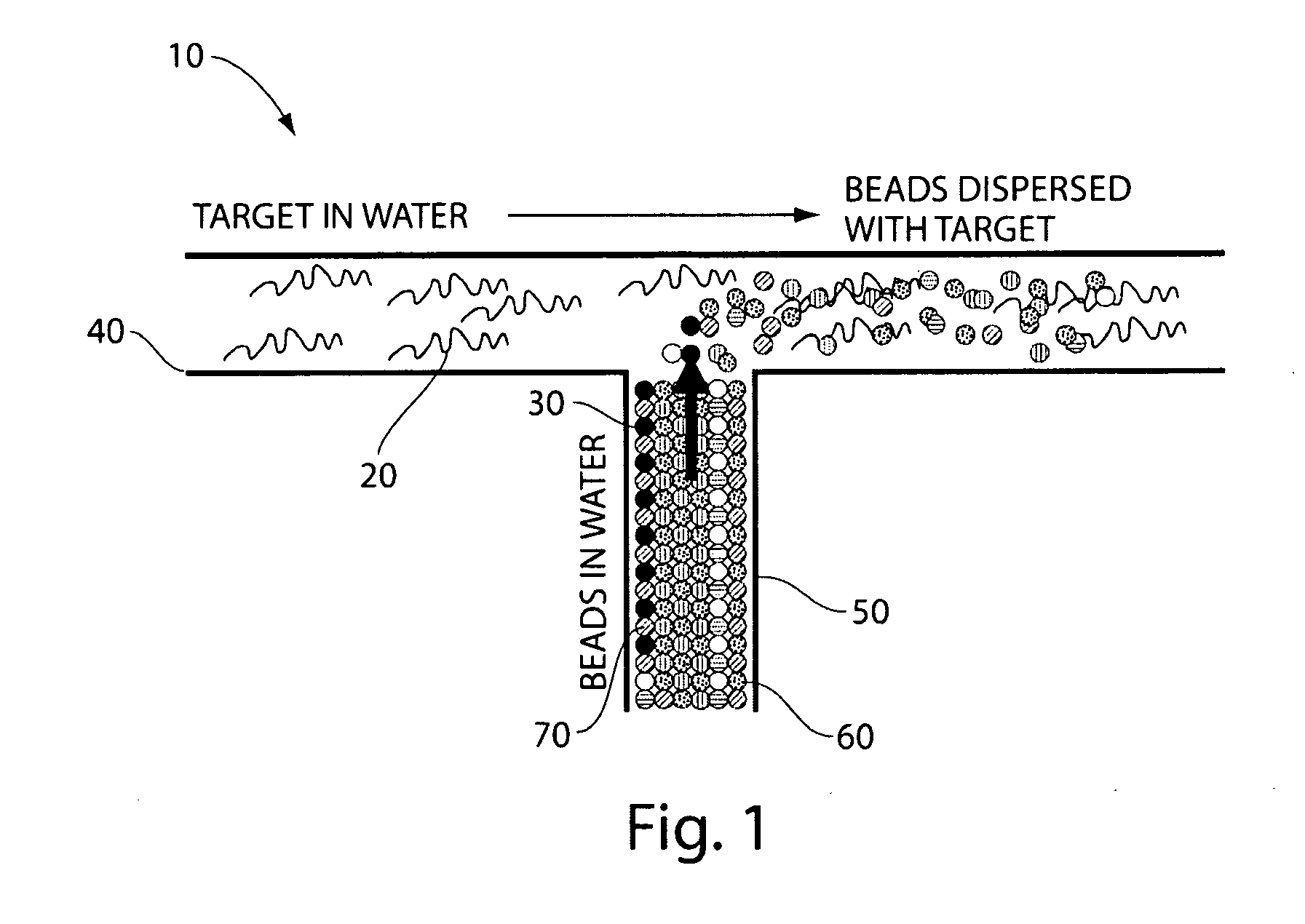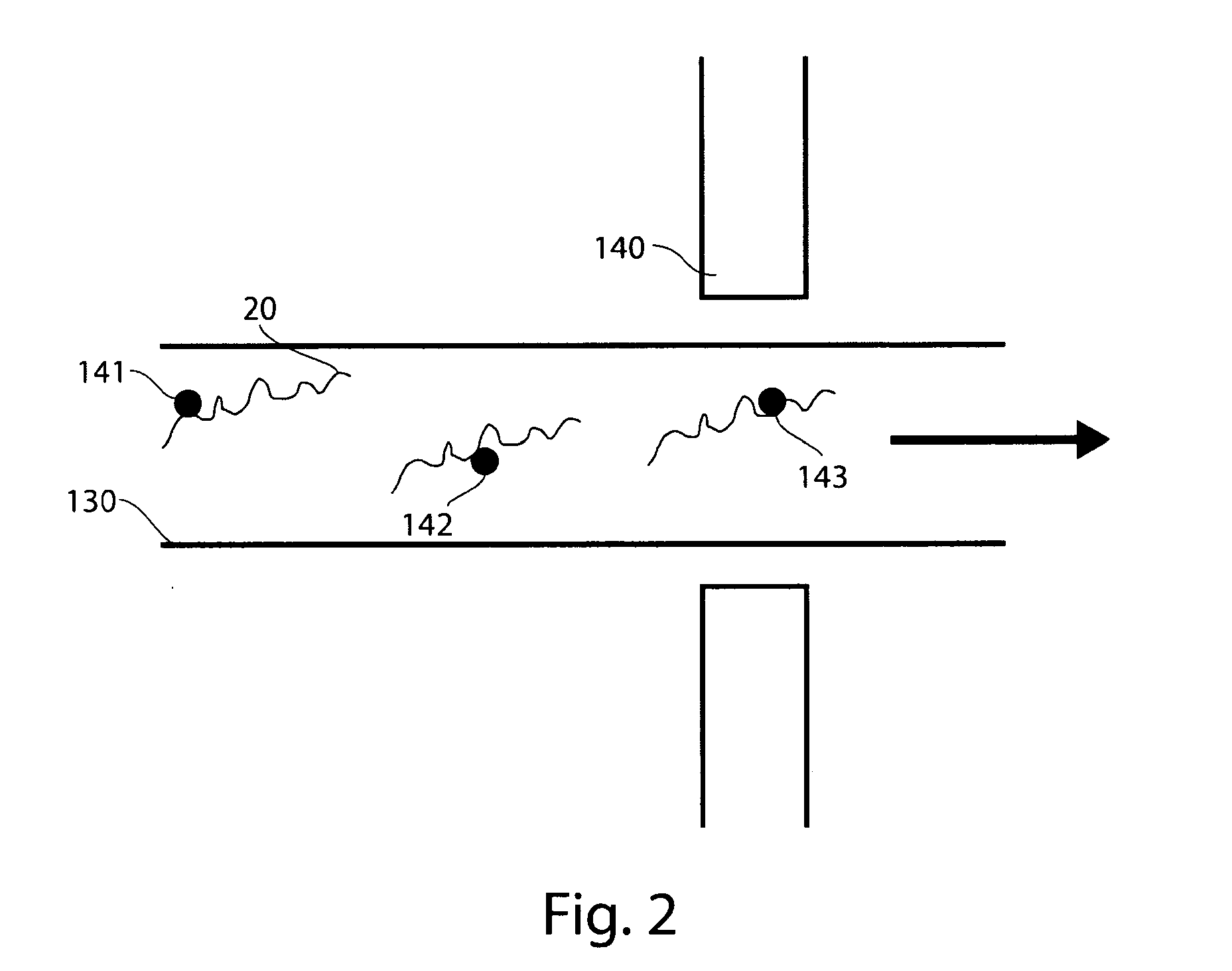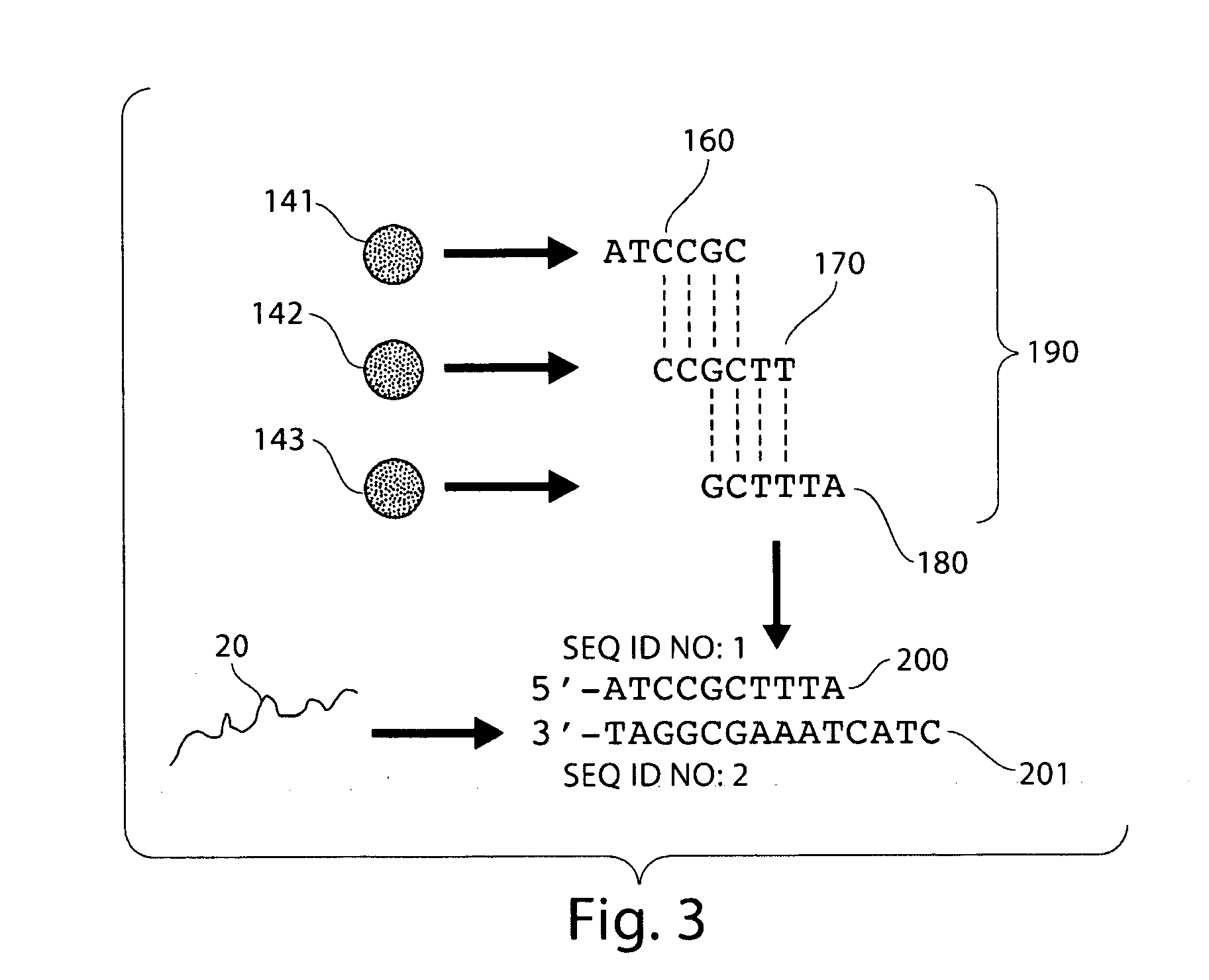Particle-assisted nucleic acid sequencing
a nucleic acid and particle technology, applied in the field of particle-assisted nucleic acid sequencing, can solve the problems of relatively limited progress in reducing sequencing time for current methods such as those that rely on arrays of oligonucleotide probes
- Summary
- Abstract
- Description
- Claims
- Application Information
AI Technical Summary
Benefits of technology
Problems solved by technology
Method used
Image
Examples
example 1
[0099]This example demonstrates single base-pair specificity of nucleic acid probes using a ligation test assay. Referring to FIG. 7, nucleic acid probe sequences 5′-ATATCC-3′510; 5′-GGATCC-3′520; 5′-GTCTCC-3′530; 5′-GTAGCC-3′540; 5′-GTATAC-3′550; and 5′-GTATCA-3′560 were separately mixed with target 400, probe 410, and ligase and incubated for 30 min at room temperature. Each reaction contained 20 microliters of 1× ligase buffer, 400 Units of T4 DNA ligase, 100 nM of a nucleic acid probe selected from nucleic acid probes 500-560, 200 nM of target 400, 100 nm of probe 410, and 1 mg / mL BSA. Following incubation, 20 microliters of a stop solution were added to quench the reaction. The stop solution contained 50 mM EDTA, 85% v / v formamide, and 0.005% bromophenol blue. The reactions were analyzed by denaturing polyacrylamide gel electrophoresis (PAGE) at 350 volts for 1 hour, stained with 1×SYBR Gold in TBE buffer, and visualized with UV light.
[0100]Probes 510 through 560 each have a si...
PUM
| Property | Measurement | Unit |
|---|---|---|
| Spectrum | aaaaa | aaaaa |
Abstract
Description
Claims
Application Information
 Login to View More
Login to View More - R&D
- Intellectual Property
- Life Sciences
- Materials
- Tech Scout
- Unparalleled Data Quality
- Higher Quality Content
- 60% Fewer Hallucinations
Browse by: Latest US Patents, China's latest patents, Technical Efficacy Thesaurus, Application Domain, Technology Topic, Popular Technical Reports.
© 2025 PatSnap. All rights reserved.Legal|Privacy policy|Modern Slavery Act Transparency Statement|Sitemap|About US| Contact US: help@patsnap.com



